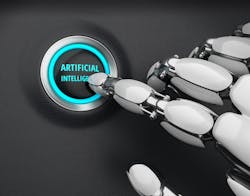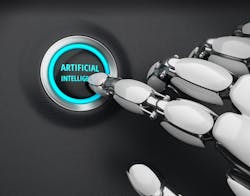Technology Insights: The future is now, as AI invades robotics
Robots—programmable machines able to carry out a series of actions autonomously, or semi-autonomously, are making meteoric advances in their capabilities, as they mesh with AI—artificial intelligence. AI algorithms spawn capabilities of learning, perception, language, problem-solving, and logical reasoning. The evolution of robots into intelligent existence is positioning them to mesh with humankind, and to ultimately change the way humans live and think.
Social robots teach us more about being human
Social robots—machines that have been designed to perform and replicate human behavior, as well as interacting with humans on a social level—can teach us more about how our brains work according to Emily Cross, professor of social robotics at the University of Glasgow, Scotland. In a project named Social Robots, Cross and her team are employing neural decoding techniques to determine how much a human’s emotional orientation toward a robot changes in response to the robot’s behavior.
“The central tenets to my questions are, can we use human-robot interaction to better understand the flexibility and fundamental mechanisms of social cognition and the human brain,” Cross said.
Brain imaging technology has shown that a happy, sad or neutral facial expression on a robot will engage the same brain sectors as a human face with the same expressions will. In the University of Glasgow study, robots were programmed to either throw tantrums or appear dejected after losing at a game, which elicited responses of bemusement from subjects initially but, more significantly, people responded to them quite strongly, according to Cross.
Research at the University of Washington found that soldiers who used robots in bomb disposal developed emotional attachments toward the robots and manifested frustration anger or sadness when the robots were destroyed.
Cross points out the importance of gleaning the dynamics from human-robot relationships, since robots are already working as companions in nursing homes and as tutors in childcare. In part of the study, a Cozmo robot is sent home with study participants, whose brains are imaged before and after a less-than-10-hour time span. “If we’re going to have robots in our home environment, if they’re going to be in our schools teaching our kids across weeks, if not years, if they’re going to be peoples’ social companions, we want to know a lot more than just what happens after 10 hours’ (of exposure),” Cross said.1
Electronic glove gives robots a sense of touch
Researchers at Stanford University have mocked up an electronic glove that allows robots to possess a portion of the manual dexterity that humans employ. Skin-like touch sensors permitted the robotic hands to moderate its grip pressure enough to lift and move a pingpong ball without crushing it, as well as to touch a delicate berry without squashing it. “This technology puts us on a path to one day giving robots the sort of sensing capabilities found in human skin,” Bao said.
The sensors in the glove’s fingertips measure the intensity and direction of pressure simultaneously, indispensable when trying to achieve sensitive manual dexterity. The team has yet to perfect the glove’s automatic control of the sensors, but the claim is that the glove could eventually be able to hold an egg between thumb and forefinger without damage to the egg.2
Emotional hack: Looking for love in robotic places
A new consumer robot pet, the Lovot, which attempts to reconstitute the phenomenon of love, is a combination of sensors, AI, wheels, wings, and large moving eyes. The lovable gizmos originated in the start-up Japanese firm Groove X, founded by Kaname Hayashi, who formerly worked at Softbank, where he helped develop the Pepper robot.
According to the Lovot website, “Lovot will react to your moods and do all it can to fill you with joy and re-energize you. It may not be a living creature, but Lovot will warm your heart.” The Lovot is equipped with a heat sensor, which allows it to locate and advance toward you. The small robot sports a camera on its head that can record and share videos of its environment. It also has other sensors that permit it to react to hugs and other human interactions.
Similarly to love in the real world, these robots do not come inexpensively: retail value is $1,300. The robot is set to be released in August 2019, and the company is accepting pre-orders.3
REFERENCES
https://phys.org/news/2018-12-robotic-companions-thumbs-machines-human.html
https://news.stanford.edu/2018/11/21/stanford-develops-electronic-glove-gives-robots-sense-touch/
https://www.forbes.com/sites/brucelee/2018/12/22/need-some-love-here-are-robot-pets-that-use-ai-to-mimic-emotions/#3223e1704ec6

